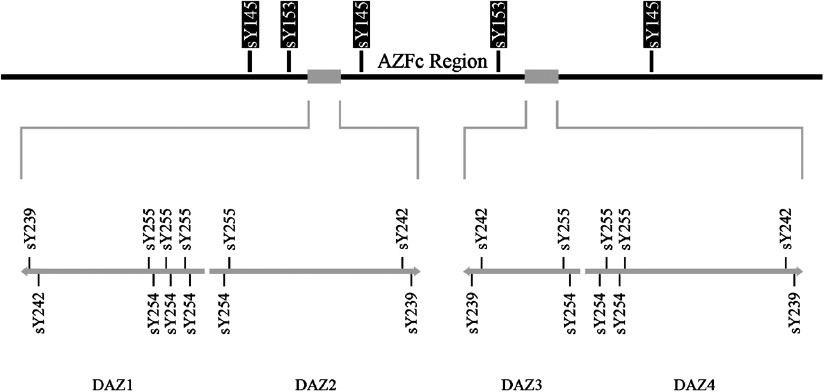Translate this page into:
Methodological errors in screening of Yq microdeletion in Iranian azoospermic men
†For correspondence: h.khorramkhorshid@avicenna.ac.ir, hrkk1@uswr.ac.ir
This is an open-access article distributed under the terms of the Creative Commons Attribution-Noncommercial-Share Alike 3.0 Unported, which permits unrestricted use, distribution, and reproduction in any medium, provided the original work is properly cited.
This article was originally published by Medknow Publications & Media Pvt Ltd and was migrated to Scientific Scholar after the change of Publisher.
Sir,
There are some discrepancies in the prevalence of Y chromosome microdeletions among Iranian azoospermic men reported by various researchers. We read with interest the article by Mirfakhraie et al1 and noticed some methodological errors which cast doubts on the validity of their results.
They reported that the prevalence of Yq microdeletions among Iranian azoospermic men was 12 per cent and azoospermia factor region AZFb had the most common microdeletion (66.67% of total deletion) followed by AZFc (41.67%)1. This is perhaps the first study reporting that the prevalence of AZFb microdeletion was higher than AZFc. Based on a meta-analysis of data on the Y chromosome microdeletions, relative prevalence of AZFc deletions is reported to be the highest (59.6% of total deletion) followed by AZFb microdeletions (15.8)2. Mirfakhraie et al1 described three patients who were negative for sequence tagged site (STC) makers sY254, sY255, sY239 and sY242. On the other hand, analysis of AZFd in these patients showed absence of sY145 and presence of sY1531. The absence of sY254 and sY255 indicates complete deletion of AZFc region3.
To determine the relative location of the mentioned STS markers, we used in silico PCR which is available at the University of California Santa Cruz (UCSC) Genome Browser. The sY145 and sY153 are present in three and two copies, respectively (Fig.). Regarding the position of these STS markers on the MSY (male-specific region of the Y chromosome) reference sequence4 (Fig.), presence of sY153 STS marker in the cases with deletions of the AZFc region and sY145 is not possibe and should be considered as a methodological error.

- Relative position of STSs inside AZFc and putative AZFd regions used by Mirfakhraie et al1. The STSs of the putative AZFd region are highlighted in black.
Mirfakhraie et al1 reported one patient with complete deletion of AZFc region, while the sY153 and sY145 were present. Theoritically, according to the relative positions of these STSs (Fig.), the deletion of sY145 and sY153 in patients with deletion of AZFc is possible. However, Noordam et al5 showed that all AZFc deletions would be negative for all AZFd STSs (except for sY152 wich is inside DAZ genes).
Besides these methodological errors, the sequence of MSY and the mechanism of Yq microdeletions have definitely shown that putative AZFd does not exist67 and STS markers referred to as AZFd are actually inside AZFc region3.
Finally, for detection of AZF microdeletions there are validated guidelines endorsed by the European Academy of Andrology (EAA) and the European Molecular Genetics Quality Network (EMQN) which could detect up to 95 per cent of all reported AZF microdeletions7.
References
- High prevalence of AZFb microdeletion in Iranian patients with idiopathic non-obstructive azoospermia. Indian J Med Res. 2010;132:265-70.
- [Google Scholar]
- Y chromosome microdeletions and alterations of spermatogenesis. Endocr Rev. 2001;22:226-39.
- [Google Scholar]
- Four DAZ genes in two clusters found in the AZFc region of the human Y chromosome. Genomics. 2000;67:256-67.
- [Google Scholar]
- The male-specific region of the human Y chromosome is a mosaic of discrete sequence classes. Nature. 2003;423:825-37.
- [Google Scholar]
- Techniques and reasons to remain interested in the Y chromosome. Fertil Steril. 2006;86:1801-2.
- [Google Scholar]
- Defining regions of the Y-chromosome responsible for male infertility and identification of a fourth AZF region (AZFd) by Y-chromosome microdeletion detection. Mol Reprod Dev. 1999;53:27-41.
- [Google Scholar]
- EAA/EMQN best practice guidelines for molecular diagnosis of y-chromosomal microdeletions. State of the art 2004. Int J Androl. 2004;27:240-9.
- [Google Scholar]





